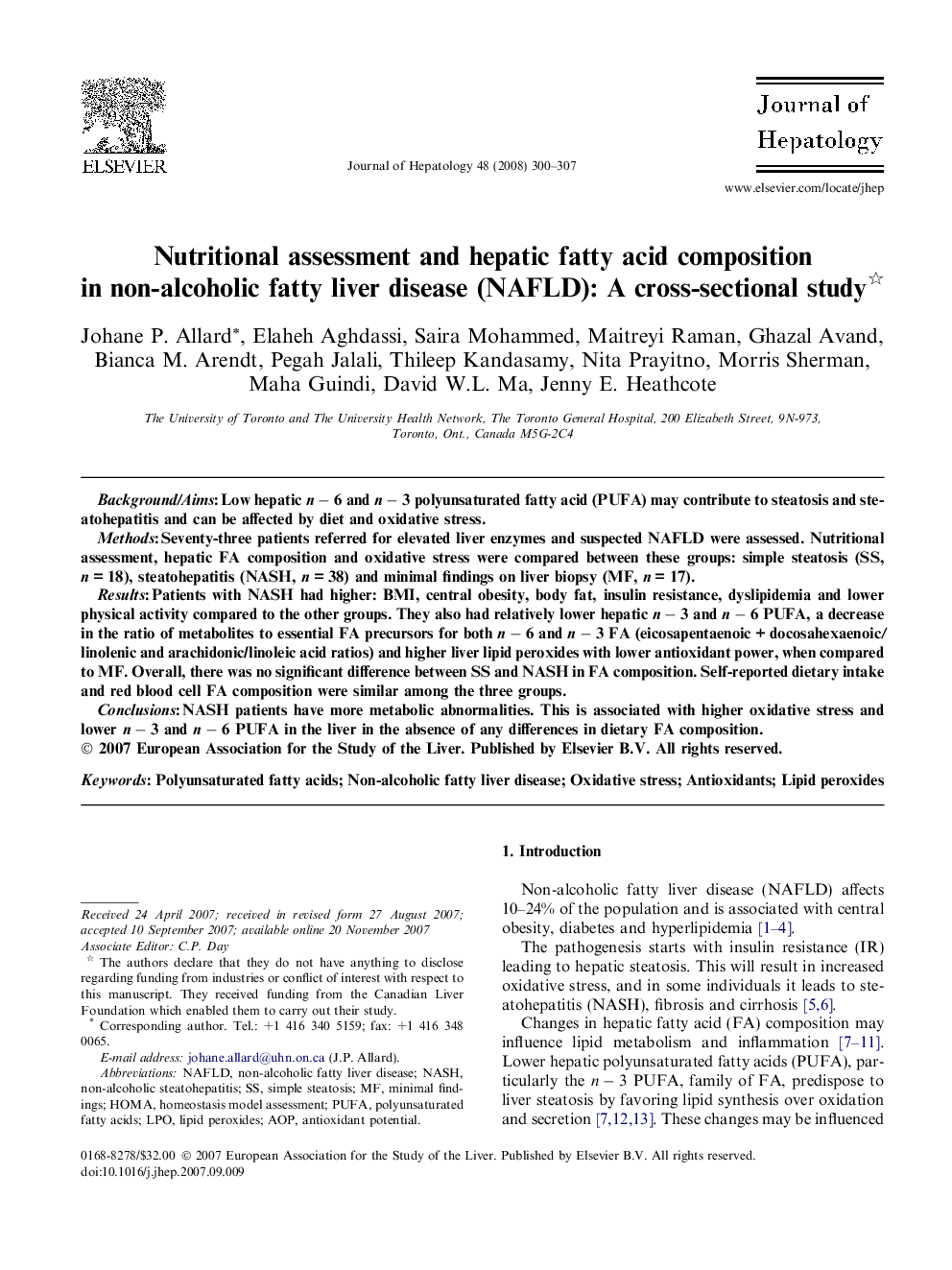| Article ID | Journal | Published Year | Pages | File Type |
|---|---|---|---|---|
| 3315386 | Journal of Hepatology | 2008 | 8 Pages |
Background/AimsLow hepatic n − 6 and n − 3 polyunsaturated fatty acid (PUFA) may contribute to steatosis and steatohepatitis and can be affected by diet and oxidative stress.MethodsSeventy-three patients referred for elevated liver enzymes and suspected NAFLD were assessed. Nutritional assessment, hepatic FA composition and oxidative stress were compared between these groups: simple steatosis (SS, n = 18), steatohepatitis (NASH, n = 38) and minimal findings on liver biopsy (MF, n = 17).ResultsPatients with NASH had higher: BMI, central obesity, body fat, insulin resistance, dyslipidemia and lower physical activity compared to the other groups. They also had relatively lower hepatic n − 3 and n − 6 PUFA, a decrease in the ratio of metabolites to essential FA precursors for both n − 6 and n − 3 FA (eicosapentaenoic + docosahexaenoic/linolenic and arachidonic/linoleic acid ratios) and higher liver lipid peroxides with lower antioxidant power, when compared to MF. Overall, there was no significant difference between SS and NASH in FA composition. Self-reported dietary intake and red blood cell FA composition were similar among the three groups.ConclusionsNASH patients have more metabolic abnormalities. This is associated with higher oxidative stress and lower n − 3 and n − 6 PUFA in the liver in the absence of any differences in dietary FA composition.
